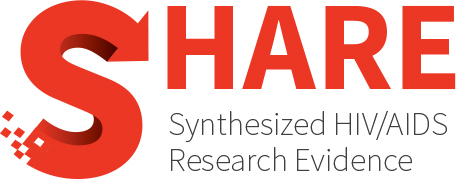Category Archives: Linkage/engagement in care
A narrative systematic literature review: A focus on qualitative studies on HIV and medication-assisted therapy in the United States
Over the last two decades, the United States (U.S.) has experienced an opioid crisis that has had a significant negative societal and economic impact. Due to the high utilization of...
Adherence to HIV care and associated health functioning among youth living with HIV in Sub-Saharan Africa
Older adolescents and young adults (youth) living with HIV (YLH) in sub-Saharan Africa (SSA) are at high risk for poor HIV treatment adherence and associated negative health outcomes including viral...
Stigma, HIV risk, and access to HIV prevention and treatment services among me who have sex with mem (MSM) in the United States: A scoping review
In light of recent advances in HIV prevention and treatment, we reviewed the literature to understand how different types of stigma impact HIV risk; access to HIV prevention, care, and...
Comparing the effects of HIV self-testing to standard HIV testing for key populations: A systematic review and meta-analysis
BACKGROUND: We update a previous systematic review to inform new World Health Organization HIV self-testing (HIVST) recommendations. We compared the effects of HIVST to standard HIV testing services to understand...
What do we know about patient-provider interactions in sub-Saharan Africa? A scoping review
INTRODUCTION: patient-centred care has become a rallying call for improving quality and access to care in countries where health system responsiveness and satisfaction with health services remain low. Understanding patient-provider...
Evidence of sociodemographic heterogeneity across the HIV treatment cascade and progress towards 90-90-90 in sub-Saharan Africa — A systematic review and meta-analysis
INTRODUCTION: Heterogeneity of sociodemographics and risk behaviours across the HIV treatment cascade could influence the public health impact of universal ART in sub-Saharan Africa if those not virologically suppressed are...
Electronic and other new media technology interventions for HIV care and prevention: A systematic review
INTRODUCTION: Electronic and other new media technologies (eHealth) can facilitate large-scale dissemination of information and effective delivery of interventions for HIV care and prevention. There is a need to both...
A cascade of interventions to promote adherence to antiretroviral therapy in African countries
PURPOSE OF REVIEW: We reviewed interventions to improve uptake and adherence to antiretroviral therapy (ART) in African countries in the Treat All era. RECENT FINDINGS: ART initiation can be improved...
